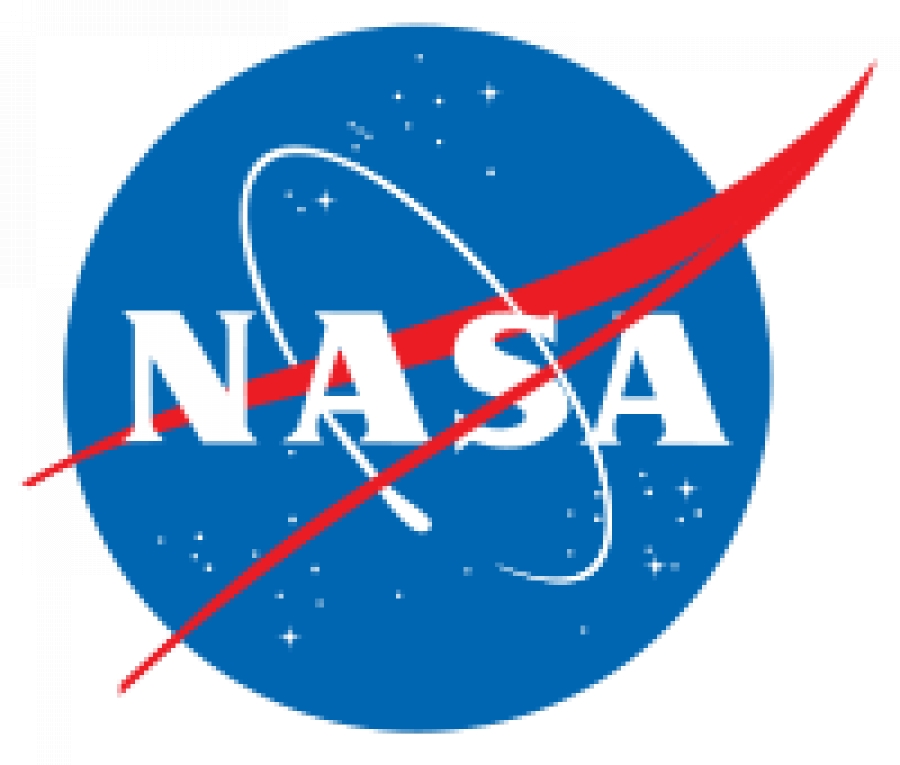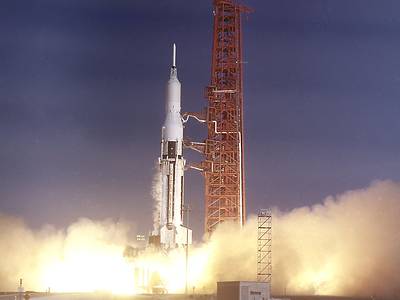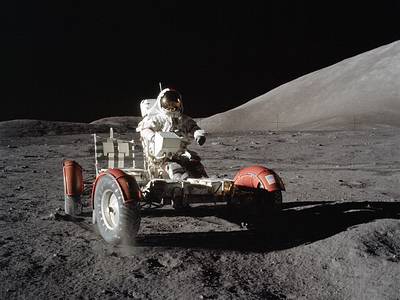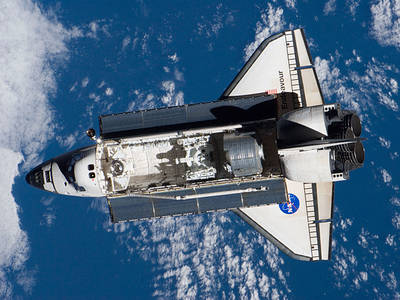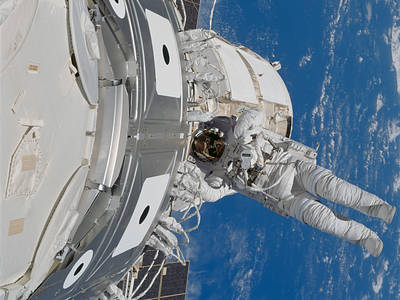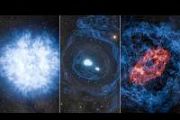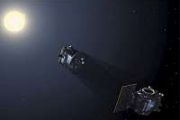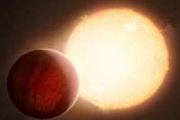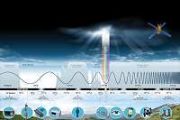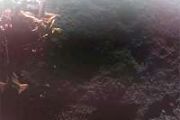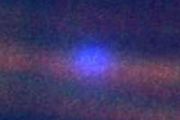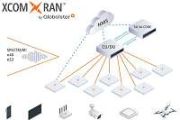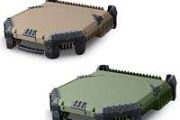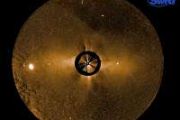The National Aeronautics and Space Administration (NASA) is the agency of the United States government that is responsible for the nation's civilian space program and for aeronautics and aerospace research.
The National Aeronautics and Space Administration is America’s civil space program and the global leader in space exploration. The agency has a diverse workforce of just under 18,000 civil servants, and works with many more U.S. contractors, academia, and international and commercial partners to explore, discover, and expand knowledge for the benefit of humanity. With an annual budget of $23.2 billion in Fiscal Year 2021, which is less than 0.5% of the overall U.S. federal budget, NASA supports more than 312,000 jobs across the United States, generating more than $64.3 billion in total economic output (Fiscal Year 2019).
At its 20 centers and facilities across the country – and the only National Laboratory in space – NASA studies Earth, including its climate, our Sun, and our solar system and beyond. We conduct research, testing, and development to advance aeronautics, including electric propulsion and supersonic flight. We develop and fund space technologies that will enable future exploration and benefit life on Earth.
NASA also leads a Moon to Mars exploration approach, which includes working with U.S. industry, international partners, and academia to develop new technology, and send science research and soon humans to explore the Moon on Artemis missions that will help prepare for human exploration of the Red Planet. In addition to those major missions, the agency shares what it learns so that its information can make life better for people worldwide. For example, companies use NASA discoveries and technologies to create new products for the public. To ensure future success for the agency and the nation, NASA also supports education efforts in STEM with an emphasis on increasing diversity in our future workforce.
History
The National Aeronautics and Space Administration (NASA), is responsible for unique scientific and technological achievements in human spaceflight, aeronautics, space science, and space applications that have had widespread impacts on our nation and the world. Forged in response to early Soviet space achievements, NASA was built on the National Advisory Committee for Aeronautics (NACA), and other government organizations, as the locus of U.S. civil aerospace research and development.
When NASA opened for business on October 1, 1958, it accelerated the work already started on human and robotic spaceflight. NASA's first high profile program was Project Mercury, an effort to learn if humans could survive in space. This was followed by Project Gemini, which used spacecraft built for two astronauts to perfect the capabilities needed for the national objective of a human trip to the Moon by the end of the 1960s. Project Apollo achieved that objective in July 1969 with the Apollo 11 mission and expanded on it with five more successful lunar landing missions through 1972. After the Skylab and Apollo-Soyuz Test Projects of the mid-1970s, NASA's human spaceflight efforts again resumed in 1981, with the Space Shuttle program that continued for 30 years. The Shuttle was not only a breakthrough technology, but was essential to our next major step in space, the construction of the International Space Station.
Over the last 60 years NASA has continued to push the boundaries with cutting edge aeronautics research that has dramatically changed the way we build and fly airplanes. NASA has also completed the reconnaissance of our solar system, with intense investigation of all the planets. Using orbital spacecraft like the Hubble Space Telescope, NASA has also dramatically changed our understanding of the universe around us, as well as our own planet. NASA’s early work on launch vehicles, communication satellites, and weather satellites has fundamentally changed daily life and created whole new industries. As a catalyst for international cooperation, NASA has also changed how and why humanity conducts space exploration. Now, NASA is preparing to take humankind farther than ever before, as it helps to foster a robust commercial space economy near Earth, and pioneers further human and robotic exploration as we venture into deep space.
The NASA History Office Program publishes a quarterly newsletter, as well as an array of books (print and digital), hosts social media, provides fellowships, and runs the Historical Reference Collection (our version of an archive) to assist the public in finding more information on aeronautical and space history. In addition, the staff produces the Aeronautics and Space Report of the President. The National Aeronautics and Space Act of 1958 directs NASA to produce an annual report that includes a “comprehensive description of the programmed activities and the accomplishments of all agencies of the United States in the field of aeronautics and space activities" during the preceding year.
Our staff also assists the public, media, researchers, NASA employees and Congressional staff to find resources within and outside the NASA History Office's Historical Reference Collection.
NASA Missions
A
ACE
AIM
Analog Missions
Apollo
Apollo-Soyuz
Aqua
Aquarius
ARCTAS
Artemis Program (Human Spaceflight — Moon to Mars)
ARTEMIS and THEMIS Science Missions
ASTRO-1
ASTRO-2
Astro-E2 (Suzaku)
ATTREX
Aura
B
C
CALIPSO
Cassini-Huygens
CHAMP
Chandra X-Ray Observatory
CINDI
Clementine
Cloud-Aerosol Transport System (CATS)
Cloudsat
Cluster ESA/NASA Mission
Commercial Crew
Commercial Resupply Services
Compton Gamma-Ray Observatory
Cosmic Background Explorer (COBE)
Cosmic Hot Interstellar Plasma Spectrometer (CHIPS)
CubeSats
Curiosity
CYGNSS (Cyclone Global Navigation Satellite System)
D
DART (Double Asteroid Redirection Test)
Dawn
Deep Impact
DISCOVER-AQ
Dragonfly
E
Earth Observing-1
Earth Probe Total Ozone Mapping Spectrometer (EP-TOMS)
Earth Radiation Budget Satellite
ECOSTRESS
EPOXI
Euclid
Europa Clipper
Exploration Mission-1 (EM-1) (SLS/Orion)
Exploration Mission-2 (EM-2) (SLS/Orion)
Explorer
Extreme Ultraviolet Explorer
F
FAST
Fermi Gamma-ray Space Telescope
Fire and Smoke
FUSE
G
GALEX
Galileo
Gemini
Genesis
Geotail
GLAST
Global Precipitation Measurement (GPM)
Glory
GOES
GOLD (Global-scale Observations of the Limb and Disk)
GRAIL
Gravity Probe-B
Gravity Recovery and Climate Experiment (GRACE)
Gravity Recovery and Climate Experiment Follow-On (GRACE-FO)
H
Herschel
HETE-2
Heliophysics
Hinode (Solar-b)
Hitomi (ASTRO-H)
Hubble
Hurricanes
I
IBEX (Interstellar Boundary Explorer)
ICESat
ICESat-2
IceBridge
Ionospheric Connection Explorer (ICON)
IMAGE
IMAP (Interstellar Mapping and Acceleration Probe)
InSight
International Gamma-Ray Astrophysics Laboratory (INTEGRAL)
International Space Station
IRIS (Interface Region Imaging Spectrograph)
IXPE (Imaging X-ray Polarimetry Explorer)
J
James Webb Space Telescope
Jason
JUICE (JUpiter ICy Moons Explorer)
Juno
K
L
LADEE: Lunar Atmosphere Dust Environment Explorer
LAGEOS 1 and 2
Landsat
Landsat Data Continuity Mission
LCROSS
Low-Boom Flight Demonstration
LRO (Lunar Reconnaissance Orbiter)
Lucy (Trojan Asteroid Mission)
Lunar Outpost
Lunar Quest Program
M
Magellan
Magnetospheric Multiscale (MMS)
Mariner
Mars Express
Mars Exploration Rovers (Spirit and Opportunity)
Mars Global Surveyor
Mars InSight Lander
Mars Odyssey
Mars Pathfinder
Mars Perseverance Rover
Mars Reconnaissance Orbiter
Mars Science Laboratory (Curiosity)
MAVEN: Mars Atmosphere and Volatile EvolutioN
Mercury (Human Spaceflight Program)
MESSENGER: Mercury, Surface, Space Environment, Geochemistry and Ranging
Mini-RF
Moon Mineralogy Mapper
N
Nancy Grace Roman Space Telescope
Near Earth Asteroid Rendezvous (NEAR)
NEEMO (NASA Extreme Environment Mission Operations)
NEOWISE
New Horizons
Neutron star Interior Composition Explorer (NICER)
NISAR (NASA-ISRO Synthetic Aperture Radar)
NMP EO-1
NOAA-N
NOAA-N Prime
NPP
NuSTAR
O
Ocean Surface Topography Mission/Jason 2
Operation IceBridge
Orbiting Carbon Observatory-2
Orbiting Carbon Observatory-3
Orion Spacecraft
OSIRIS-REx
P
PACE (Plankton, Aerosol, Cloud, ocean Ecosystem)
Parker Solar Probe
Perseverance Rover
Phoenix
Pioneer
Pioneer Venus
Planck
POES
Polar
Psyche (Asteroid Mission)
Q
R
Radiation Belt Storm Probes/Van Allen Probes
Ranger
RapidScat
RHESSI
Roman Space Telescope
Roentgen Satellite (ROSAT)
Rosetta
RXTE
S
SDO (Solar Dynamics Observatory)
SEAC4RS
SERVIR
Scientific Balloons
Shuttle-Mir
Shuttle Radar Topography Mission
Skylab
Small Satellites
SMAP (Soil Moisture Active Passive)
SOFIA
SOHO
Solar Anomalous and Magnetospherice Particle Explorer (SAMPEX)
Solar Orbiter Collaboration
Solar Radiation and Climate Experiment (SORCE)
Sounding Rockets
Space Launch System (SLS)
Space Shuttle
Space Station
SPHEREx
Spitzer
Stardust-NExT
STEREO
Submillimeter Wave Astronomy Satellite (SWAS)
Suomi NPP
Surveyor
Suzaku
Swift
T
TDRS (Tracking and Data Relay Satellites)
Terra
TESS (Transiting Exoplanet Survey Satellite)
THEMIS
TIMED
TOMS-EP
TOPEX/Poseidon
TRACE
Tropical Rainfall Measuring Mission (TRMM)
TWINS
U
Ulysses
Upper Atmosphere Radiation Satellite (UARS)
V
W
Wide-Field Infrared Explorer (WIRE)
WIND
Wide-Field Infrared Survey Explorer (WISE)
Wide-Field Infrared Survey Telescope (WFIRST)
Wilkinson Microwave Anisotropy Probe (WMAP)

